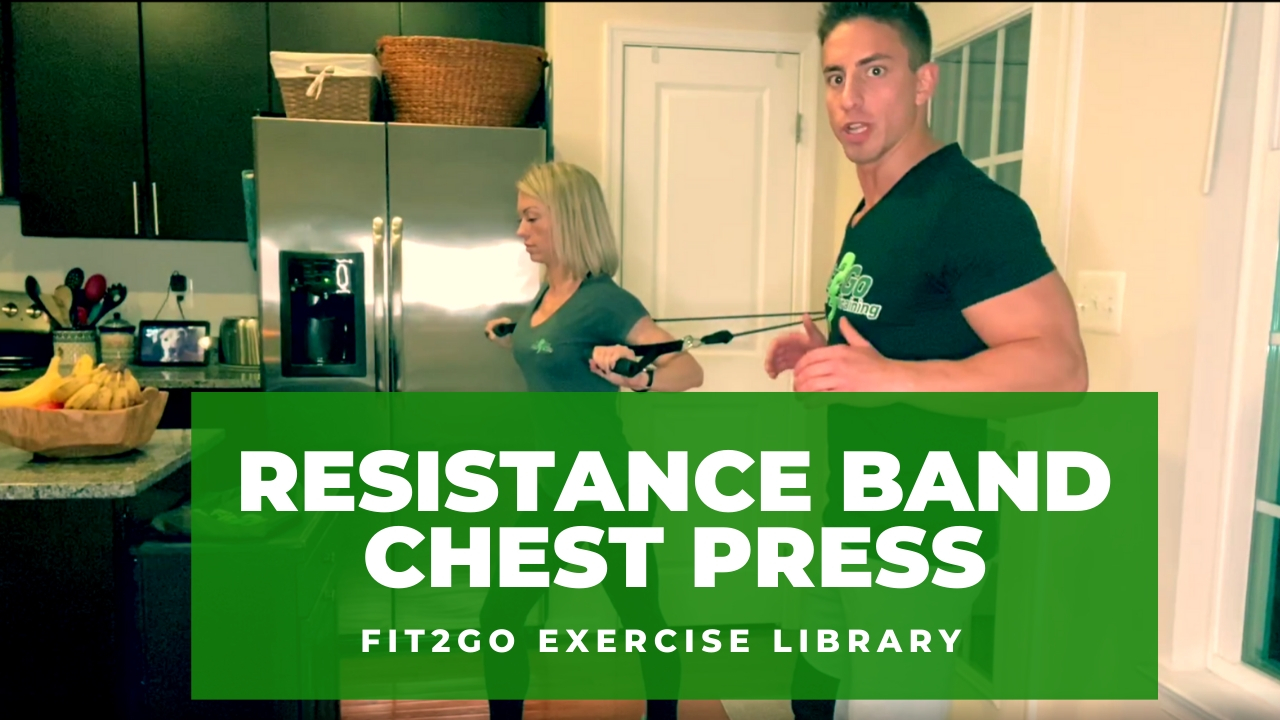
23 Dec Resistance Band Chest Press
Resistance bands are the single most essential and versatile piece of equipment for a home workout. That’s right — you DON’T need a $5000 machine to get fit and healthy.
Here’s the link to a great set on Amazon. Grab ’em if you need ’em.
There are two main movement patterns for your upper body:
1) Push
2) Pull
Today we’re focusing on the push movement. If you’re working out at a gym, your go-to push exercise is probably the bench press. If you’re working out at home, your go-to push exercise is probably the push up.
The push up is an excellent exercise, though like anything else, it has it’s pros and cons. One particular disadvantage of the push up is that since it’s resistance is bodyweight-dependent, it can be difficult to increase or decrease intensity. In other words, a 200 pound guy can’t exactly do a 50 pound push up.
Another disadvantage of the push up is that it’s a significantly more complex movement than most people think. Proper execution of the push up requires input from the scapular stabilizers and core musculature, as well as a level of overall functional stability that a beginner likely won’t have.
Now, don’t get me wrong — the push up is a fantastic exercise and it’s definitely worthwhile incorporating into your fitness routine. But today we’re looking to target just the pushing muscles (chest, triceps, anterior deltoids) like we would in a bench press.
So, the at-home push exercise we’re looking at today is called the resistance band chest press. Instead of using your own body as resistance (like you would in a push up), you’ll use an adjustable resistance band, giving you complete control over the intensity. By anchoring your band in the door, you’ll perform the same motion you would during a bench press, and reap the same rewards (and then some).
Let’s get started.
INSTRUCTIONS:
Setup: Anchor your resistance band in a door at chest level. (If you’re not sure how to do this, watch this quick tutorial:
(If you’re not sure how to do this, watch the quick tutorial here: How To Use Your Fit2Go Band’s Door Anchor)
Starting Position: Begin by facing the door and stepping back until you feel some tension in the bands. With your feet shoulder width apart, flex your abs and glutes as you sit your hips back slightly behind you (like a squat). This should give you a strong foundation.
Step 1: Pull your arms towards you while pulling your shoulder blades down and back.
Note: Remember that though your arms will be engaged, this is not an arm workout. The main muscles you should be using are in your upper back (mid traps, rhomboids, and lats). You should be squeezing your shoulder blades together and feeling a strong contraction in your upper back while pull the band towards you.
Step 2: Pause when your hands are a few inches in front of your torso and hold for two seconds. Squeeze your back muscles to maximize that contraction.
Step 3: Slowly and with control, allow your arms to reach back forward into the starting position.
Repeat for the recommended number of repetitions.


